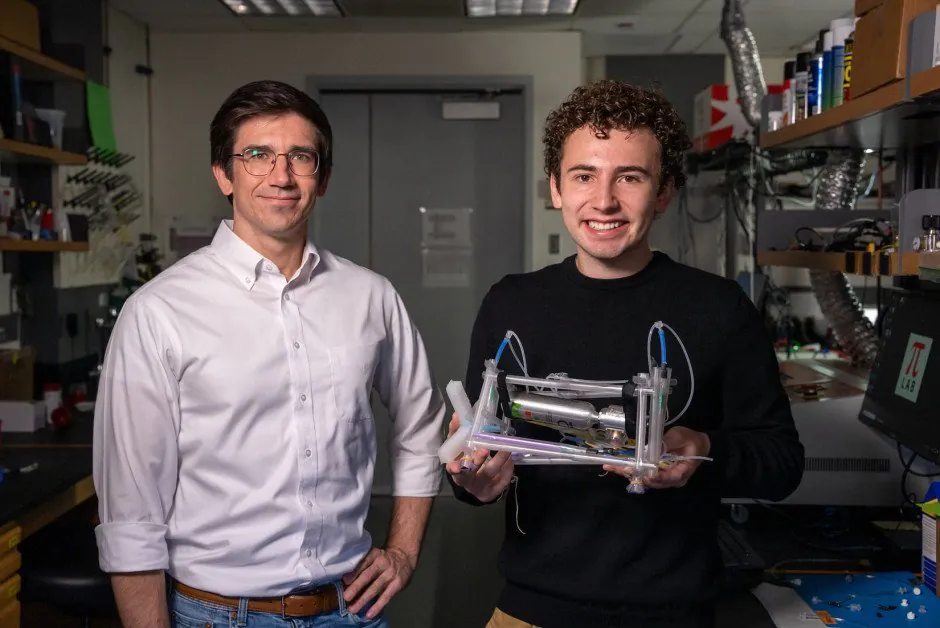Robotics
Researchers Create New Control Systems for Soft Robots

A team of robotics researchers, engineers and materials scientists from Rice University and Harvard University has demonstrated analog and air-driven control system options for soft robots. The team showed it is possible to develop programmable, non electronic circuits to control the actions of soft robots. These circuits work by processing information encoded in bursts of compressed air.
The research was published in the Proceedings of the National Academy of Sciences.
Creating the Control System
Colter Decker is lead author of the study and a Rice undergraduate.
“Part of the beauty of this system is that we’re really able to reduce computation down to its base components,” Decker said.
He also said that electronic control systems have been refined for decades, and by recreating computer circuitry “with analogs to pressure and flow rate instead of voltage and current,” it’s easier to incorporate pneumatic computation.
Decker created the soft robotic control system mostly from everyday materials, such as plastic straws and rubber bands. In the experiments, the system demonstrated air-driven logic gates that could be configured to perform operations referred to as Boolean functions, which are crucial to modern computing.
“The goal was never to entirely replace electronic computers,” Decker said.
In many cases, soft robots or wearables only need to be programmed for a few simple movements. As for the new technology, it’s possible that it “would be much cheaper and safer for use and much more durable” than traditional electronic controls.
The new project was a collaboration between several research groups and a total of nine co-authors.
The team created two components. The first is a pistonlike actuator that translates air pressure into mechanical force. And the second is a valve that can be switched off and on. The components were constructed from various parts, including plastic straws, flexible plastic tubing, rubber bands, parchment paper, and thermoplastic polyurethane sheets.
Combining Components Into Single Device
The two components could be combined into a single device, which was a bistable valve operating like a switch and using air pressure as input and output. A specific amount of air pressure results in the switch being flipped between the two states, and the valves were held closed by rubber bands and programmed by adding or subtracting rubber bands. This resulted in a change in the amount of pressure needed for activation.
Tests demonstrated that the circuits could be used to control a soft, hand-shaped robot, a pneumatic cushion and a shoebox-sized robot that walked a preprogrammed number of steps to retrieve an object.
Daniel Preston is an assistant professor of mechanical engineering at Rice and co-author of the study.
“The biggest achievement in this work is the incorporation of both digital and analog control in the same system architecture,” Preston said.
With both, the pneumatic control circuits can be programmed digitally with the “ones and zeroes that you think of in a traditional computer. But we can also bring in analog capabilities, things that are continuous.” he continues. “That allows us to really simplify the overall system architecture and achieve new capabilities that weren’t accessible in prior work.”














